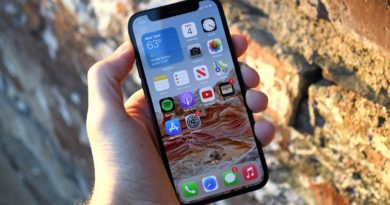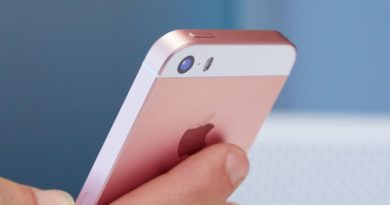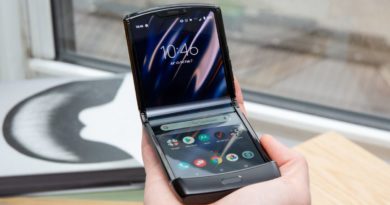Best unlocked phones in 2020
The best unlocked phones deliver freedom. Not only do you get to pick the device you want, you can then bring that unlocked handset to the best phone carrier for your needs.
Don’t worry if you want to switch carriers: It’s super easy to jump from one to another when you own an unlocked phone. And the best part is, you don’t have to pay any early termination fees.
While most unlocked phones support GSM carriers like AT&T and T-Mobile, it’s best to look for devices that support all the major U.S. providers, including Verizon. That way, you can freely choose to take your device to any carrier. That’s also critical now that 5G networks are up and running. Different carriers have launched their networks based on different technologies, so you’ll want to make sure that the phone you get works on the high-speed network of your choice.
The downside of unlocked phones is that they rarely come with the sort of massive promotional discounts you often see carriers peddling, especially to new subscribers agreeing to long-term equipment installment plans. The upside, however, is that there are many inexpensive unlocked options out there that won’t break the bank, yet provide flagship-caliber features and experiences for less. We’ve hand picked some of these devices across a range of prices in the list below to help you find the perfect fit.
What are the best unlocked phones?
The best unlocked phone based on our testing is the Google Pixel 4a. Buyers get Google’s best-in-class camera technology in a phone that costs hundreds of dollars less than flagships typically do, and even $50 less than Apple’s iPhone SE. (Google just announced the Pixel 4a 5G, which brings 5G connectivity to the device; the $499 phone ships in mid-November)
Not that you should write off Apple’s cheapest iPhone. At $399, the iPhone SE is a great value in its own right, especially since it packs Apple’s industry-leading A13 processor into a compact phone. While every wireless carrier offers the iPhone SE, Apple also sells the device unlocked, giving you the freedom to take it to any carrier.
Those willing to spend more should look into the latest pair of phones from OnePlus. Although it’s the more expensive option — and one of the priciest products OnePlus has ever made — the OnePlus 8 Pro is our pick of the two, as it includes premium features like quad cameras, wireless charging and a 120Hz display. The OnePlus 8T features the same top-of-the-line processor with even faster 65-watt charging, though its cameras aren’t quite as impressive.
And if both those OnePlus options are still too pricey, we’ll remind you the phone maker has an even cheaper alternative out there — the OnePlus Nord. The Nord costs £379, though notably, it’s not sold in the U.S. (There will soon be a Nord handset west of the Atlantic, called the OnePlus Nord N10 5G, though it’ll be different from the model launched elsewhere.)
If you’re primarily concerned about battery life, the inexpensive Moto G Power, which costs just $249, is our undisputed battery life king thanks to a massive 5,000-mAh battery and energy-sipping CPU.
Finally, iOS loyalists who prefer phones larger than the iPhone SE should note that the new 6.1-inch iPhone 12 (and upcoming 5.4-inch iPhone 12 mini) is also available unlocked, as is the iPhone 11 which is now $100 cheaper than it used to be since the iPhone 12 was announced. Likewise, Samsung’s Galaxy S20 series and new Galaxy Note 20 phablets can all be purchased unlocked, too, and the Galaxy S20 FE is one of the most affordable flagships in that collection. Usually, you’re less likely to save much by opting for Apple and Samsung’s best models without a service agreement, but you can at least reduce the price of your next device by trading in your old one.
The best unlocked phones you can buy today


The Google Pixel 4a is available for $349 unlocked and works on both GSM-based as well as CDMA-based networks, meaning you can take it to pretty much any carrier you like. That’s a big deal, because handsets this cheap typically lack universal connectivity.
Then you have to consider everything you get as part of the Pixel 4a experience — the bright 5.81-inch OLED display, quality design, solid performance (even if its not at the level of, say, the iPhone SE’s), excellent Google software and update support, and of course the Pixel’s trademark camera make for a phenomenally well-rounded midrange phone.
The Pixel 4a’s lone downside is its battery life, which pales in comparison to the iPhone SE’s ever so slightly, never mind the longevity you would get in more expensive models. But in every other way, the Pixel 4a really is the most complete phone out there under the $350 mark. Be on the look out for the larger Pixel 4a 5G for $499. It’s coming in November and it brings 5G connectivity along with a lot of features that match Google’s newly-announced $699 Pixel 5 flagship.
Read our full Google Pixel 4a review.

Just as Google has done recently with the Pixel 3a and 4a, Apple has introduced a far less expensive version of its flagship handsets in the iPhone SE. However, in this device, Cupertino has still included the same processor you’ll find in the iPhone 11 lineup — granting a ton of performance muscle for a modest $400 phone.
You’ll make some trade-offs for that lower price. Unlike Apple’s other phones, the iPhone SE features a single rear camera, though that 12-megapixel lens performed well in our tests. We wish that the iPhone SE supported Night Mode for low light photography, but photos in ordinary conditions match what Google’s camera-focused Pixels can produce.
The iPhone SE also sports other features that typically pass over cheaper phones, like wireless charging. And despite its low price, the new iPhone SE will be supported with new software updates for years to come — a privilege that usually misses comparable Android phones in this segment. That includes iOS 14, which has added a host of new capabilities to the iPhone SE’s repertoire.
Read our full iPhone SE 2020 review.

Sure, there’s the pricier iPhone 12 Pro and Pro Max and the tiny iPhone 12 mini. But if you ask us, the best unlocked iPhone for most people will be the 6.1-inch iPhone 12, as it offers many of the same features the Pro variants do, at a size that isn’t too compact or unwieldy for most users.
Starting at $829 unlocked, the iPhone 12 offers comprehensive 5G connectivity to more bands than any other smartphone, making it an ideal choice for anyone who wants 5G, but doesn’t want to be tied to one service provider in particular. The iPhone 12 also benefits from Apple’s new 5-nanometer A14 Bionic chip, the fastest ever in any phone, which blitzed the competition in our testing. A Super Retina XDR OLED panel and great dual-lens camera system complete the package.
If we had some gripes, the iPhone 12 does get pretty expensive once you factor in the potential need for a fast charging adapter, as Apple doesn’t provide one in the box with this handset. Additionally, giving users only 64GB of base storage is disappointing, if we’re being diplomatic. But in most other respects, the iPhone 12 is the best choice for anyone eyeing the premium iPhone experience at a reasonable price unlocked.
Read our full iPhone 12 review.

The Moto G Power retains two of the best things about the Moto G7 Power that came before it — the battery and the price. The former helps the latest Motorola phone produce the best result we’ve ever seen on our battery test, while the latter makes the Moto G Power a terrific bargain.
When we ran our battery test on the Moto G Power — continuous web surfing over LTE until the phone runs out of juice — the phone held out for a record time of 16 hours and 10 minutes. That’s more than a half-hour better than the long-lasting Moto G7 Power. It’s nearly four hours better than the Moto G Stylus, a phone with similar specs and a built-in stylus — but a smaller battery — that costs $50 more than the Moto G Power.
Meanwhile, that $249 price on the Moto G Power means you won’t have to pay big bucks to enjoy epic battery life. You’ll also get a Snapdragon 665 chipset and triple camera array that keep pace with other phones in this price range.
Read our full Moto G Power review.

If the Galaxy S20 is a little too rich for your blood at $999, why not save $300 by opting for the Galaxy S20 FE? It’s got many of the same key features — a Snapdragon 865 processor with 5G compatibility and a display with a 120Hz refresh rate — but without the high price. The trade-offs you make are more than acceptable for many users: you’ll get a phone made out of a plastic case instead of glass and metal, and the telephoto lens on the FE doesn’t pack as many megapixels. Otherwise, it’s the same experience.
You can buy the Galaxy S20 FE unlocked from Samsung as well as other retailers, but do know that if you plan on using it with Verizon, you’ll need to the the version specifically designed for Verizon’s mmWave-based 5G network. Otherwise, this unlocked phone will work just fine with either AT&T or T-Mobile 5G.
Read our full Samsung Galaxy S20 FE review.

If you’re looking for one of the best unlocked phones and money is no object, treat yourself to the Samsung Galaxy Note 20, which offers a 6.7-inch OLED display, Snapdragon 865 Plus processor and versatile S Pen stylus for $999.
In fact, the Note 20 is such a well-rounded phone, we’d recommend it over the similarly-priced 6.2-inch Galaxy S20, which has the benefit of a 120Hz display but lacks the Note 20’s better processor, bigger battery and of course, its S Pen. And that S Pen helps you get more from apps like Samsung Notes, which now syncs across a multitude of devices and allows for appending audio recordings to written or typed notes. The Note 20’s wireless DeX Mode and Windows Your Phone projection also helps you get more out of it on bigger displays.
The Note 20 also has a phenomenal set of triple cameras that may lack the pricier Note 20 Ultra‘s advanced sensors and optical zoom but still take great shots in any condition. Overall, it’s one of the finest handsets you can buy unlocked and take to any network.
Read our full Samsung Galaxy Note 20 review.

The OnePlus 8T is an iteration on the OnePlus 8 that released earlier this year with two standout features. First is a 6.55-inch, 120Hz display which makes for a notable step up from the regular OnePlus 8’s 90Hz panel. Second — and perhaps more impressive — is a new 65-watt charging system which makes the OnePlus 8T the fastest-charging phone we have ever tested, hitting 93 percent in just 30 minutes.
That kind of pace is unprecedented, and the OnePlus 8T offers it for just $749. However, it’s not the perfect device for that attractive price. We really wish OnePlus could find a way to improve the photographic output of its cameras, but the post-processing on the OnePlus 8T produces overly cool shots marred with contrast and an inability to tease out detail. That said, if camera image quality isn’t the be all, end all for you, the OnePlus 8T is certainly worth a look.
Read our full OnePlus 8T review.

The iPhone SE and iPhone 12 may be some of the best unlocked phones you can get, but they’re not the only unlocked phones available from Apple. If you’re looking for something a little larger, now at $100 cheaper than ever before, the iPhone 11 is the way to go.
The iPhone 11 Pro Max has a bigger screen, and the iPhone 11 Pro models have more cameras. But the lower price tag on the iPhone 11 — it starts at $599, which is $100 less now that the iPhone 12 range has been announced — is too attractive to ignore. Besides, you’re not giving up that much for those savings. You still get two rear cameras that offer the same features found in the iPhone 11 Pro series, like better photos in low light.
The powerful A13 Bionic processor is the same, too, and the iPhone 11 actually outlasts the iPhone 11 Pro in our battery test. The modem in the iPhone 11 isn’t as fast, and while it supports fast charging, you’ll have to buy your own charger, but these are small sacrifices to make for an otherwise top-notch phone. You can order an unlocked version of the iPhone 11 from Apple.
Read our full iPhone 11 review.

TCL has been making smartphones for years under the Alcatel and BlackBerry brands, but the TCL 10 series marks its first global handset release under its own marque. The most powerful model, the $449 TCL 10 Pro, is our favorite of the trio, because it combines a high-quality glass-and-metal design with solid performance and amenities like 128GB of built-in storage, as well as a headphone jack.
The TCL 10 Pro’s biggest concession concerns its quad-lens camera system. It comprises wide-angle, ultrawide and macro optics, but doesn’t take photos appreciably better than those you get from the likes of the iPhone SE or Pixel 3a in most cases. Still, if you can see past that, this is a compelling option in the realm of midrange unlocked handsets — not to mention a strong debut for TCL as a phone maker in its own right. If you’re interested in the TCL 10 Pro, it’s also worth noting a 5G model is expected to debut this fall for roughly $500.
Read our full TCL 10 Pro review.

Between its 6.5-inch OLED display, 128GB of storage, quad-lens camera and 4,000-mAh battery, the Galaxy A51 offers almost everything you could want in a smartphone, but costs just $399. We love this budget Galaxy’s design, which manages to be sturdy yet lightweight, with extremely slim bezels more befitting of premium handsets. And best of all, even though the A51 is available through most major carriers, you can also buy it unlocked.
However, it’s not perfect. Unfortunately, paying iPhone SE money won’t get you iPhone SE performance in the Galaxy A51, as Samsung’s Exynos 9611 chipset can occasionally drag during routine tasks. And while it’s nice to have all those camera perspectives, the quality of the A51’s photography doesn’t compare to what you’d get from the Pixel 3a. That said, this Galaxy offers a few perks those other midrange phones don’t, and so it’s worth a look for buyers with a rigid amount to spend who aren’t tempted by Apple’s or Google’s propositions.
For a closer look at how the Galaxy A51 compares to Apple’s new cheap iPhone, check out our Samsung Galaxy A51 vs. iPhone SE 2020 faceoff.
Read our full Samsung Galaxy A51 review.
How to choose the best unlocked phone for you
- Find a phone that works on your carrier: The vast majority of unlocked devices operate on GSM networks in the U.S. These include AT&T and T-Mobile, as well as discount carriers that run on those networks, such as Cricket Wireless, Metro by T-Mobile and Straight Talk. Some so-called multimode unlocked phones also work with CDMA carriers like Sprint and Verizon, such as all of Apple’s iPhones, and the Google Pixel 4 and Pixel 3a.
- Make sure the coverage map fits your needs: In terms of coverage area, there’s less discrepancy between networks than ever before, but there are still gaps, especially in less-populated areas. “Make sure [the phone you’re buying] works on a carrier that offers good coverage in your area,” advised Avi Greengart, research director for consumer platforms and devices at market research firm Current Analysis.’
- Shop around, and don’t be afraid to go used: Because some unlocked phone makers skip the carriers to sell their devices, they can often pass those savings onto you. However, don’t be afraid to entertain buying one of the best used smartphones, as you can often find very tempting offers on previous-generation flagships from sites like Swappa, Decluttr and even Amazon for refurbished examples.
How we test unlocked phones
Every smartphone Tom’s Guide evaluates is tested for days in real-world use cases and benchmarked with a gamut of performance-measuring apps. We use a light meter to ascertain display quality data, like brightness and color accuracy, and our proprietary battery test determines longevity on a charge by streaming webpages over a 4G or 5G network.
We explore the software, test gaming performance and conduct live camera comparisons with rival handsets. We also factor in network compatibility, so you can be certain whether a device will be operational on your carrier before you buy. Each of these factors plays a part in our comprehensive verdict.


